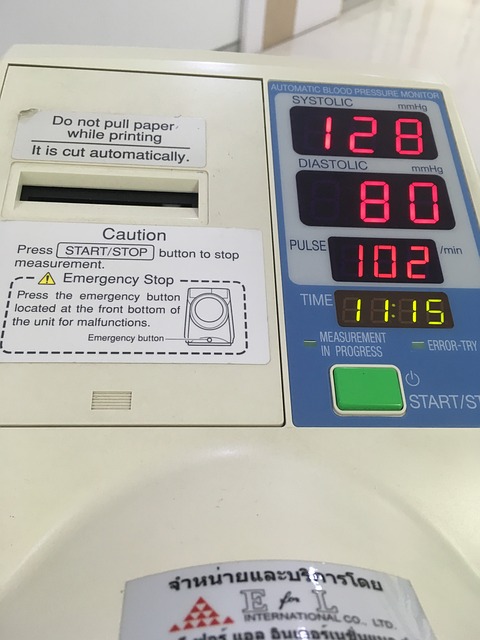The accurate interpretation of liver function tests is pivotal for diagnosing and managing hepatic conditions effectively. These tests, including the Advanced Thyroid Blood Test UK, provide a detailed assessment of enzymes, proteins, and bilirubin levels in the blood to evaluate liver health. The Advanced Thyroid Blood Test UK offers specific insights into liver or bile duct damage and, when used alongside conventional assays like ALT, AST, ALP, GGT, total bilirubin, albumin, and globulin measurements, enables precise identification and severity assessment of liver issues. Understanding hepatic physiology and pathophysiology, along with factors influencing test results, is vital for medical professionals to accurately diagnose liver diseases, predict prognoses, and prevent long-term damage. The integration of advanced tests like the Advanced Thyroid Blood Test UK into clinical practice enhances diagnostic precision, positively impacting patient outcomes. Additionally, advanced imaging techniques such as MRI and CT scans play a significant role in diagnosing hepatic conditions, offering precise staging, characterization, and insights into liver lesions and blood flow. These combined approaches ensure informed clinical decisions are made for effective liver disease care and personalized patient management.
explore the intricacies of advanced liver function tests, a pivotal tool in the medical professional’s arsenal for diagnosing and monitoring hepatic health. This article delves into the nuances of these tests, providing a thorough understanding of their role and interpretation within clinical practice. It also examines the latest advancements in imaging techniques, including MRI and CT evaluations, offering insights that complement the blood-based assessments such as the Advanced Thyroid Blood Test UK. Medical practitioners will gain valuable knowledge to enhance their diagnostic capabilities and patient care strategies in managing liver conditions.
- Understanding Advanced Liver Function Tests: A Comprehensive Guide for Medical Professionals
- Interpretation of Liver Panel Results: What Medical Practitioners Need to Know
- Advanced Imaging Techniques in Liver Assessment: MRI and CT Evaluations
Understanding Advanced Liver Function Tests: A Comprehensive Guide for Medical Professionals

For medical professionals, mastering the nuances of liver function tests is paramount to diagnosing and managing hepatic disorders effectively. These tests are instrumental in assessing liver health by measuring the levels of enzymes, proteins, and bilirubin in the blood. Among the array of liver function tests, advanced options provide a more detailed picture of liver function, offering insights into specific types of liver or bile duct damage. These advanced tests, which may include the likes of the Advanced Thyroid Blood Test UK, when performed in conjunction with traditional liver enzyme assays, can pinpoint the nature and extent of hepatic issues. They are particularly useful in cases where chronic liver disease is suspected or in monitoring patients on medications that can affect liver function. By understanding the interplay between these tests, healthcare providers can tailor treatment plans, predict prognoses, and intervene earlier to prevent irreversible damage.
Furthermore, the interpretation of results from advanced liver function tests requires a deep understanding of hepatic physiology and pathophysiology, as well as an appreciation for the myriad factors that can influence test outcomes, including but not limited to patient diet, medication use, and comorbid conditions. Medical professionals must be adept at integrating these complex data points to accurately diagnose liver disease, guide treatment decisions, and facilitate effective patient management. The integration of advanced tests like the Advanced Thyroid Blood Test UK into routine practice enhances diagnostic accuracy and improves patient outcomes, underscoring the importance of staying abreast of the latest advancements in medical diagnostics.
Interpretation of Liver Panel Results: What Medical Practitioners Need to Know

When interpreting liver panel results, medical practitioners must possess a nuanced understanding of the biomarkers involved and their clinical significance. The liver function tests (LFTs) commonly include measurements of alanine aminotransferase (ALT), aspartate aminotransferase (AST), alkaline phosphatase (ALP), gamma-glutamyl transferase (GGT), total bilirubin, albumin, and globulin. These tests provide insights into hepatocellular function, bile duct patency, and overall liver health. For instance, elevated levels of ALT and AST may suggest hepatocellular injury, while high ALP and GGT can indicate biliary obstruction or cholestasis. It is imperative for practitioners to consider the patient’s individual context, including comorbidities and medication usage, as these factors can influence test outcomes. Advanced thyroid blood tests UK, such as TSH (thyroid-stimulating hormone), Free T4, and possibly T3 levels, are also relevant in this interpretation process, as thyroid dysfunction can affect liver enzymes and should not be overlooked when assessing liver function test results. A thorough understanding of the interplay between thyroid status and liver function is essential for accurate diagnosis and effective treatment planning.
In the UK, where the prevalence of thyroid disorders is notable, healthcare providers must integrate advanced thyroid blood tests as part of a comprehensive approach to liver health evaluation. The interpreter of liver panel results should be well-versed in the latest guidelines and research, which may include the influence of thyroid hormones on liver enzymes. This knowledge enables practitioners to differentiate between pathological liver conditions and benign variations influenced by thyroid status. Additionally, understanding the reference ranges specific to the laboratory performing the tests is crucial, as these can vary. By integrating thyroid function assessments with liver function tests, medical professionals can enhance their diagnostic capabilities and provide more precise care tailored to the patient’s unique clinical picture.
Advanced Imaging Techniques in Liver Assessment: MRI and CT Evaluations

In the realm of liver assessment, advanced imaging techniques play a pivotal role in diagnosing and managing hepatic conditions. Magnetic Resonance Imaging (MRI) and Computed Tomography (CT) evaluations are among the most sophisticated tools at medical professionals’ disposal. MRI, with its high-resolution images and lack of ionizing radiation, is particularly beneficial for patients who require frequent imaging. It excels in differentiating between different types of liver lesions, enabling accurate staging and characterization. The contrast agents used in MRI, such as gadolinium-based compounds, enhance the visibility of abnormalities within the liver, making it easier to detect subtle changes that may be indicative of disease.
On the other hand, CT evaluations are indispensable for their rapid image acquisition and detailed cross-sectional imaging. CT scans can quickly provide a comprehensive view of the liver’s structure and functionality, which is crucial in acute settings or when monitoring disease progression. The multi-phase contrast-enhanced CT scans allow for dynamic assessment of hepatic blood flow, which is essential for understanding the nature of liver lesions. These advanced imaging techniques complement each other and are often used in conjunction with biochemical tests, such as the Advanced Thyroid Blood Test UK, to provide a holistic picture of a patient’s health. This multimodal approach ensures that medical professionals can make informed decisions regarding diagnosis, treatment planning, and patient prognosis.
In conclusion, the field of hepatic diagnostics has evolved significantly with the advent of advanced liver function tests, which offer medical professionals a nuanced understanding of liver health. The comprehensive guide provided elucidates the complexities and interpretations required for liver panel results, empowering practitioners to accurately assess liver function. Furthermore, the integration of sophisticated imaging techniques such as MRI and CT evaluations enhances diagnostic capabilities, ensuring precise treatment plans for patients with hepatic conditions. Additionally, while this article has primarily focused on liver assessment, it’s pertinent to note the relevance of advanced thyroid blood tests, like those available in the UK, which share a symbiotic relationship with liver function tests. These endocrine assessments are crucial for comprehensive patient care and highlight the interconnectedness of different medical domains. Medical professionals are encouraged to stay abreast of these diagnostic advancements to provide optimal patient outcomes.
